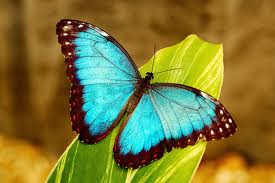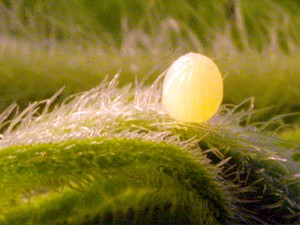 Butterflies are magnificent creatures- vibrant and colorful. They are very important for our ecosystem. Some butterflies have evolved symbiotic and parasitic relationships with social insects such as ants. Some species are pests because in their larval stages they can damage domestic crops or trees; however, some species are agents of pollination of some plants, and caterpillars of a few butterflies eat harmful insects. Butterflies exhibit polymorphism, mimicry, and aposematism. Butterflies may have one or more broods per year. The number of generations per year varies from temperate to tropical regions with tropical regions showing a trend towards multivoltinism. Butterflies feed primarily on nectar from flowers. Some also derive nourishment from pollen tree sap, rotting fruit, dung, decaying flesh, and dissolved minerals in wet sand or dirt. Butterflies are important as pollinators for some species of plants as they can carry pollen over long distances.
Butterflies are magnificent creatures- vibrant and colorful. They are very important for our ecosystem. Some butterflies have evolved symbiotic and parasitic relationships with social insects such as ants. Some species are pests because in their larval stages they can damage domestic crops or trees; however, some species are agents of pollination of some plants, and caterpillars of a few butterflies eat harmful insects. Butterflies exhibit polymorphism, mimicry, and aposematism. Butterflies may have one or more broods per year. The number of generations per year varies from temperate to tropical regions with tropical regions showing a trend towards multivoltinism. Butterflies feed primarily on nectar from flowers. Some also derive nourishment from pollen tree sap, rotting fruit, dung, decaying flesh, and dissolved minerals in wet sand or dirt. Butterflies are important as pollinators for some species of plants as they can carry pollen over long distances.
 Among the many species of butterflies, a special mention has to be made of the truly breathtaking Monarch butterflies. Monarch butterflies named so because of their huge size are also called as wanderers mostly because of the character trait they exhibit of migration. These butterflies are famous for their southward migration and northward return in summer from Canada to Mexico and Baja California which spans the life of three to four generations of the butterfly. Monarch butterflies are one of the few insects which can cross the Atlantic. Monarch butterflies primarily feed on milkweed plants which contain cardiac glycosides which make them distasteful as preys and thus protect them from their predators.
Among the many species of butterflies, a special mention has to be made of the truly breathtaking Monarch butterflies. Monarch butterflies named so because of their huge size are also called as wanderers mostly because of the character trait they exhibit of migration. These butterflies are famous for their southward migration and northward return in summer from Canada to Mexico and Baja California which spans the life of three to four generations of the butterfly. Monarch butterflies are one of the few insects which can cross the Atlantic. Monarch butterflies primarily feed on milkweed plants which contain cardiac glycosides which make them distasteful as preys and thus protect them from their predators.
The decline in insect populations over long periods is viewed as a natural phenomenon but this is not true in the case of Monarch butterflies. “Monarchs have been faced with the loss of habitat for many years”, said Jen Baker, Head-of-the-Lake Land Trust Program coordinator for the Hamilton Naturalists’ Club.
 Milkweed, the Monarch larvae’s main food source as well as where they lay their eggs, has been depleting. The main reason for this steady decline is the unrestricted use of pesticides and weedicides. These harmful and toxic chemicals might protect the other plants from insects but they sure manage to kill the milkweed plant. The number of milkweed plants has decreased by 58 percent from 1997 to 2010 almost entirely from losses in cultivated fields due to indiscriminate use of herbicides. An army of volunteers in the U of M-based Monarch Larva Monitoring Project has been collecting data on the numbers of monarch eggs per milkweed plant in more than 800 milkweed patches around the country Also, since monarchs lay more eggs on milkweeds if they’re in cultivated fields, egg production was disproportionately affected by the loss of agricultural milkweed plants. The researchers estimate that between 1999 and 2010, monarch egg production in the Midwest dropped by 81 percent.
Milkweed, the Monarch larvae’s main food source as well as where they lay their eggs, has been depleting. The main reason for this steady decline is the unrestricted use of pesticides and weedicides. These harmful and toxic chemicals might protect the other plants from insects but they sure manage to kill the milkweed plant. The number of milkweed plants has decreased by 58 percent from 1997 to 2010 almost entirely from losses in cultivated fields due to indiscriminate use of herbicides. An army of volunteers in the U of M-based Monarch Larva Monitoring Project has been collecting data on the numbers of monarch eggs per milkweed plant in more than 800 milkweed patches around the country Also, since monarchs lay more eggs on milkweeds if they’re in cultivated fields, egg production was disproportionately affected by the loss of agricultural milkweed plants. The researchers estimate that between 1999 and 2010, monarch egg production in the Midwest dropped by 81 percent.
Christine Dell’Amore of National Geographic News wrote in her article dated 18th March 2013 that in December 2012, scientists surveying Monarch habitat in Mexico’s Monarch Butterfly Biosphere Reserve found the insects occupied 59 percent less land than the previous year—the smallest area recorded in 20 years. Nine butterfly colonies were found in just 2.94 acres (1.19 hectares) of land, compared with 7.14 acres (2.89 hectares) in 2011 and a high of 44.9 acres (18.19 hectares) in 1997, according to the report, released March 13.
This is alarming news for the Monarch butterflies as well as us since widespread depletion of Monarch butterfly populations will have a direct effect on the pollination of some flowers and subsequently disturb the food chain. Thus it is the need of the hour to curb the use of toxic and harmful chemicals as weedicides and switch over to a more environment-friendly as well as the non-toxic way to protect the plants while ensuring that non-target species like butterflies are not harmed in any way. Combirepel™ are coming of age products which have the unique attributes of being non-toxic and environment-friendly insect and pest aversives. They are meant to repel and not kill the target species and have no effect whatsoever on non-target species like butterflies which are very helpful in pollination.
So for this particular problem, we at C Tech Corporation have come up with a viable solution.
At C Tech Corporation, we offer a safe and effective solution to deal with these insects.
Combirepel™ is a non-hazardous product that primarily repels insects from the application. It is a broad spectrum repellent which works against insects thus efficaciously repulse them away from the application. The best feature of this product is that it is environmentally safe and causes no harm to the insect as well as humans and the environment.
The product available in the form of lacquer can be used as a topical application and can be applied to wooden and concrete structures of heritage sites. The liquid concentrate is compatible with most of the surfaces like wood, concrete, fiber, ceramic, metal, polymer etc.
The product available in the form of masterbatch can be incorporated into polymeric applications like wires and cables, pipes, agricultural films, etc. while they are manufactured. The product will prevent the ladybugs from coming near to these applications.
The liquid concentrate can be mixed with paints in a pre-determined ratio and be applied to the interior and exterior areas of heritage sites which can be painted. The liquid concentrate is compatible with all types of paints and solvents.
Using our products, they can repel the termites in an eco-friendly way!
Contact us at technical.marketing@ctechcorporation.com if you are facing problems with insects.
Also, visit our websites:
http://www.ctechcorporation.com/
http://www.rodrepel.com/
http://www.termirepel.com/
http://www.combirepel.com/
Follow our Facebook pages at:
1] https://www.facebook.com/Combirepel-411710912249274/
2] https://www.facebook.com/Termirepel-104225413091251/
3] https://www.facebook.com/Rodrepel-120734974768048/
Follow us on our Twitter pages at:
1] https://twitter.com/rodrepel
2] https://twitter.com/termirepel
3] https://twitter.com/combirepel
